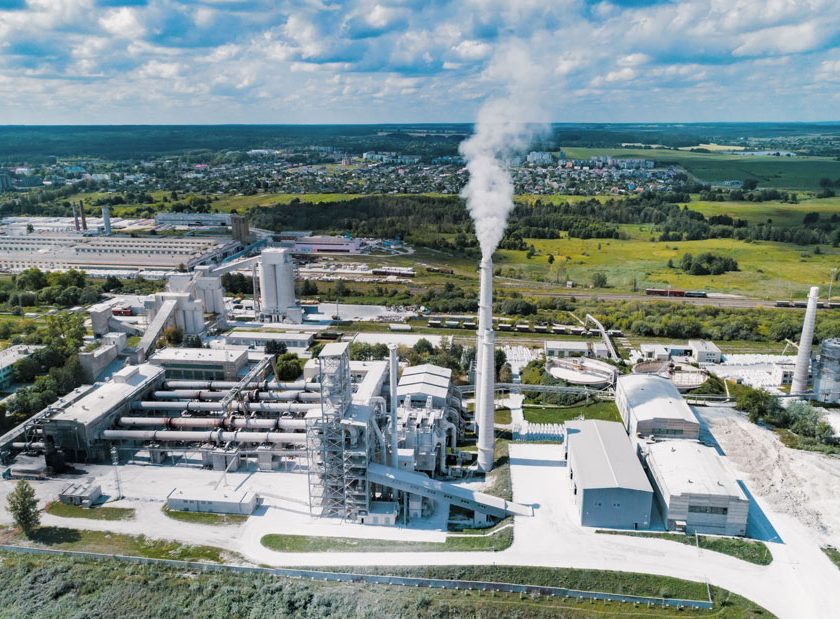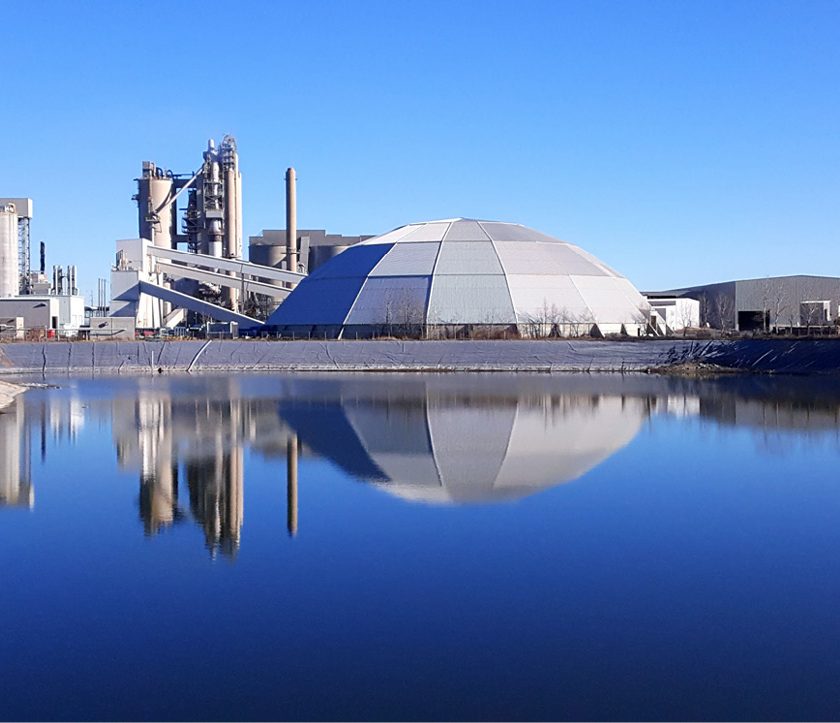By Mauro Nogarin
Although the political situation in the Peru is complicated after the removal of President Martin Vizcarra, the World Bank improved economic growth for this year to 8.1%. This trend confirms that the political uncertainty of the last two years was an obstacle to economic growth that generated a considerable reduction in the execution of public works.
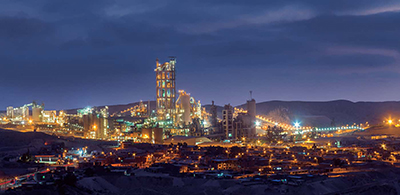
However, in this particular political context, the new elections should be considered as a new opportunity to promote a comprehensive strategy with short-term measures in order to reactivate construction activity, as well as greater initiatives to promote the modernization of infrastructure.
Although according to the latest economic statistics, the impact caused by the pandemic in recent months has consolidated higher productivity in Peru through the restructuring of the construction sector.
One year after the start of the health crisis, construction seems to have overcome the critical situation it suffered in the second and third quarters of 2020, since it grew by 15.2% in January 2021, achieving positive results for five consecutive months.
The IEC index calculated by the Peruvian Chamber of Construction (CAPECO), foresees an increase in this sector by 16.6%; thus completing a semester on the rise and a four-month period with positive double-digit rates.
The short-term forecast announced by the same institution also states that after the elections, public investment will perform better this year and a rebound is estimated between April and June, as a result of the reduced execution obtained in 2020.
Likewise, the chamber affirms that the state apparatus has structural barriers that generate inefficiency in making investments, since each year the state has more money to invest and less capacity to do so. In December 2020, it had a positive advance of 25.5%, thanks to the performance of municipalities (+ 45.8%). This important result allowed the gross construction product to grow 7.2% in January of this year, considering the rise in cement consumption (19.9%) for the same month.
At the end of the report, among the various aspects that the Construction Chamber suggests to the next government in order to promote this sector, is to promote the production of 150,000 homes in urban areas by 2026, 86.7% of which would be within the typology of social housing. In addition to promoting the construction of 25,000 new homes per year in rural areas.
According to the latest report from the Association of Cement Producers (Asocem), cement production increased by 17% compared to February 2020, while the supply was complemented by the import of 70,000 tons of cement and 77,000 tons of clinker.
As for the national dispatch of cement, in February it grew by 14% compared to the same month of 2020, going from 910,000 to 1,039,000 tons. This is the sixth consecutive month that the construction market continues to grow at a positive rate since the start of the pandemic.
In the last 12 months, the production of cement and clinker reached 9.48 million tons (11%) and 5.75 million tons (-39%), respectively.
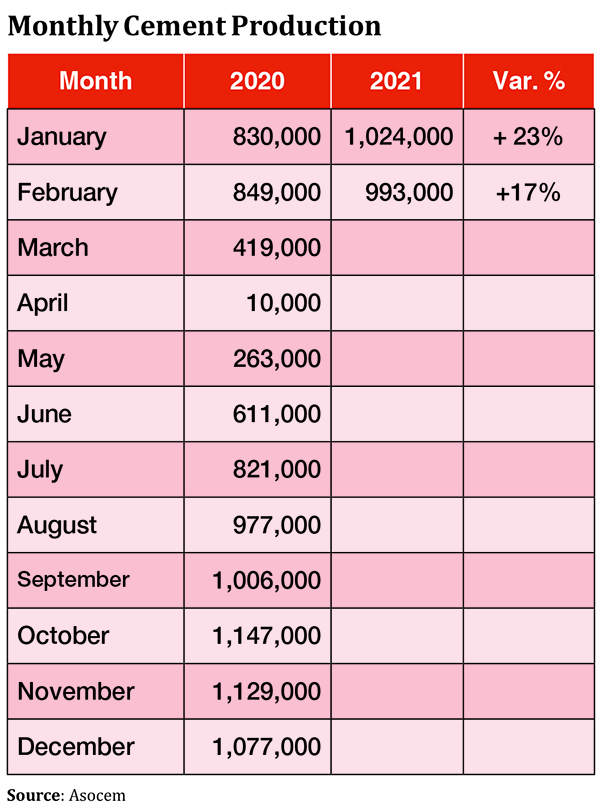
Exports as indicated in the table below, recovered very quickly in February after a sharp decrease of 11% in January, thanks to higher demand from the domestic market. Cement imports during the first two months of 2021 were an average of 67,500 tons.
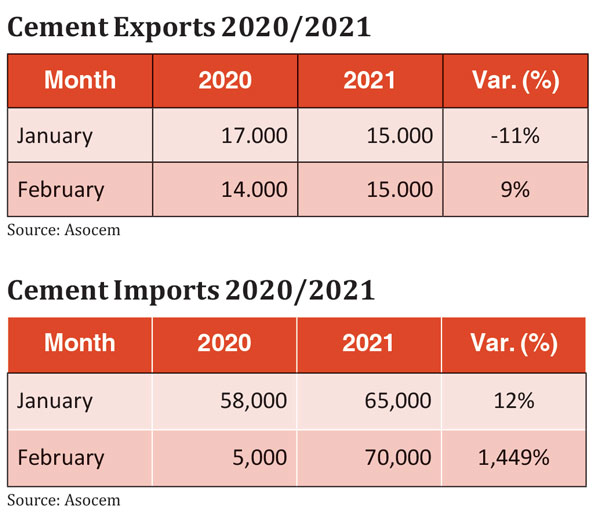
In general, the cement prices mentioned in the latest report published by the statistics office of the Ministry of Housing and Construction were stable. The average price of a bag of 42.5 kilos of portland cement in January was $6.12, and in July it increased slightly until reaching $6.15.
Regarding investments at the beginning of March 2021, the Peruvian company Yura, which is part of the Gloria group, announced that it will invest nearly US$200 million in the acquisition of state-of-the-art equipment for the manufacture of cement in Arequipa, which include an intelligent and automated control system.
With this acquisition, Yura will increase its production capacity from 5,000 metric tons per day (mtpd) of clinker to 8,000 mtpd.
The investment includes the installation of a vertical raw flour mill, the installation of a cement grinding system, with bagging, storage and dispatch equipment and a limestone conveyor belt with a distance of 4.3 km, which will also reduce even more so the use of trucks and the pollution they generate.
Mauro Nogarin is Cement Americas’ Latin American contributor.

